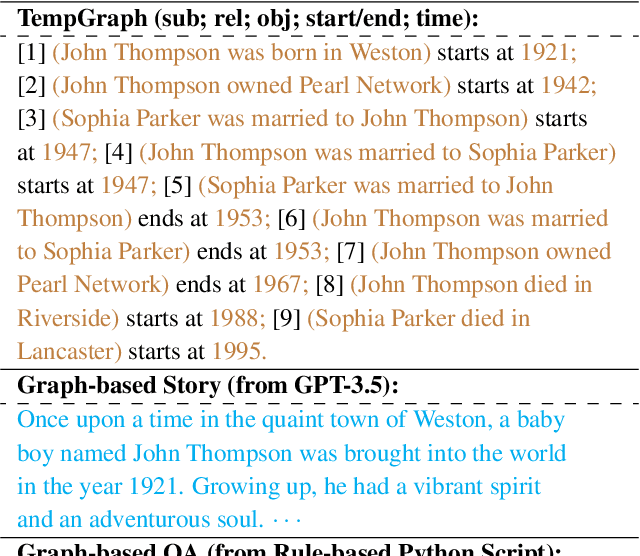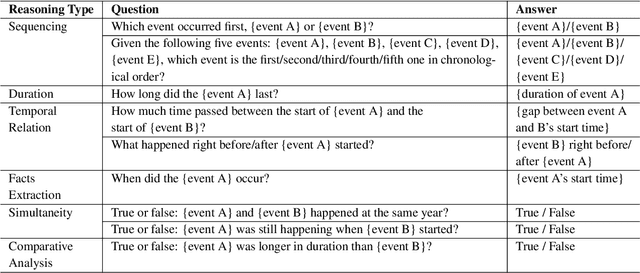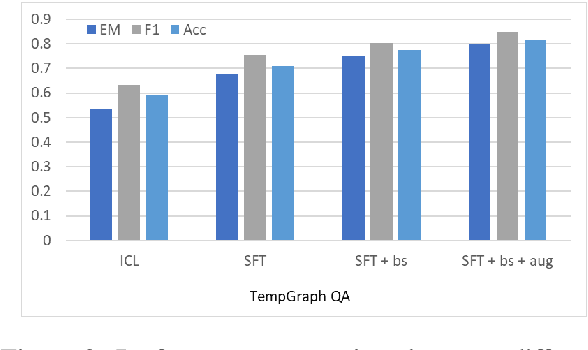Siheng Xiong
Positional Attention for Efficient BERT-Based Named Entity Recognition
May 03, 2025



Abstract:This paper presents a framework for Named Entity Recognition (NER) leveraging the Bidirectional Encoder Representations from Transformers (BERT) model in natural language processing (NLP). NER is a fundamental task in NLP with broad applicability across downstream applications. While BERT has established itself as a state-of-the-art model for entity recognition, fine-tuning it from scratch for each new application is computationally expensive and time-consuming. To address this, we propose a cost-efficient approach that integrates positional attention mechanisms into the entity recognition process and enables effective customization using pre-trained parameters. The framework is evaluated on a Kaggle dataset derived from the Groningen Meaning Bank corpus and achieves strong performance with fewer training epochs. This work contributes to the field by offering a practical solution for reducing the training cost of BERT-based NER systems while maintaining high accuracy.
Automated Sentiment Classification and Topic Discovery in Large-Scale Social Media Streams
May 03, 2025Abstract:We present a framework for large-scale sentiment and topic analysis of Twitter discourse. Our pipeline begins with targeted data collection using conflict-specific keywords, followed by automated sentiment labeling via multiple pre-trained models to improve annotation robustness. We examine the relationship between sentiment and contextual features such as timestamp, geolocation, and lexical content. To identify latent themes, we apply Latent Dirichlet Allocation (LDA) on partitioned subsets grouped by sentiment and metadata attributes. Finally, we develop an interactive visualization interface to support exploration of sentiment trends and topic distributions across time and regions. This work contributes a scalable methodology for social media analysis in dynamic geopolitical contexts.
SymPlanner: Deliberate Planning in Language Models with Symbolic Representation
May 02, 2025Abstract:Planning remains a core challenge for language models (LMs), particularly in domains that require coherent multi-step action sequences grounded in external constraints. We introduce SymPlanner, a novel framework that equips LMs with structured planning capabilities by interfacing them with a symbolic environment that serves as an explicit world model. Rather than relying purely on natural language reasoning, SymPlanner grounds the planning process in a symbolic state space, where a policy model proposes actions and a symbolic environment deterministically executes and verifies their effects. To enhance exploration and improve robustness, we introduce Iterative Correction (IC), which refines previously proposed actions by leveraging feedback from the symbolic environment to eliminate invalid decisions and guide the model toward valid alternatives. Additionally, Contrastive Ranking (CR) enables fine-grained comparison of candidate plans by evaluating them jointly. We evaluate SymPlanner on PlanBench, demonstrating that it produces more coherent, diverse, and verifiable plans than pure natural language baselines.
Improving Causal Reasoning in Large Language Models: A Survey
Oct 22, 2024



Abstract:Causal reasoning (CR) is a crucial aspect of intelligence, essential for problem-solving, decision-making, and understanding the world. While large language models (LLMs) can generate rationales for their outputs, their ability to reliably perform causal reasoning remains uncertain, often falling short in tasks requiring a deep understanding of causality. In this survey, we provide a comprehensive review of research aimed at enhancing LLMs for causal reasoning. We categorize existing methods based on the role of LLMs: either as reasoning engines or as helpers providing knowledge or data to traditional CR methods, followed by a detailed discussion of the methodologies in each category. We then evaluate the performance of LLMs on various causal reasoning tasks, providing key findings and in-depth analysis. Finally, we provide insights from current studies and highlight promising directions for future research. We aim for this work to serve as a comprehensive resource, fostering further advancements in causal reasoning with LLMs. Resources are available at https://github.com/chendl02/Awesome-LLM-causal-reasoning.
Deliberate Reasoning for LLMs as Structure-aware Planning with Accurate World Model
Oct 04, 2024



Abstract:Enhancing the reasoning capabilities of large language models (LLMs) remains a key challenge, especially for tasks that require complex, multi-step decision-making. Humans excel at these tasks by leveraging deliberate planning with an internal world model to simulate the potential outcomes of various actions. Inspired by this, we propose a novel multi-step reasoning framework for LLMs, referred to as Structure-aware Planning with Accurate World Model (SWAP). Unlike previous approaches that rely solely on Chain-of-Thought (CoT) reasoning in natural language, SWAP incorporates structural information to guide the reasoning process via a world model and provides a soft verification mechanism over the steps. Moreover, SWAP overcomes the challenge of accurate world state predictions in complex reasoning tasks by introducing a Generator-Discriminator architecture, which enables more reliable world modeling. Specifically, the generator predicts the next state, and the discriminator ensures alignment with the logical consistency required by the problem context. SWAP also encourages the policy model to explore a broad range of potential actions to prevent premature convergence. By resolving the bottlenecks of generation diversity for both actions and states using diversity-based modeling (DBM) and improving discrimination accuracy through contrastive ranking (CR), SWAP significantly enhances the reasoning performance of LLMs. We evaluate SWAP across diverse reasoning-intensive benchmarks including math reasoning, logical reasoning, and coding tasks. Extensive experiments demonstrate that SWAP achieves substantial improvements over the baselines and consistently outperforms existing LLMs of similar sizes.
The Compressor-Retriever Architecture for Language Model OS
Sep 02, 2024Abstract:Recent advancements in large language models (LLMs) have significantly enhanced their capacity to aggregate and process information across multiple modalities, enabling them to perform a wide range of tasks such as multimodal data querying, tool usage, web interactions, and handling long documents. These capabilities pave the way for transforming LLMs from mere chatbots into general-purpose agents capable of interacting with the real world. This paper explores the concept of using a language model as the core component of an operating system (OS), effectively acting as a CPU that processes data stored in a context window, which functions as RAM. A key challenge in realizing such an LM OS is managing the life-long context and ensuring statefulness across sessions, a feature limited by the current session-based interaction paradigm due to context window size limit. To address this, we introduce compressor-retriever, a model-agnostic architecture designed for life-long context management. Unlike other long-context solutions such as retrieval-augmented generation, our approach exclusively uses the base model's forward function to compress and retrieve context, ensuring end-to-end differentiability. Preliminary experiments demonstrate the effectiveness of this architecture in in-context learning tasks, marking a step towards the development of a fully stateful LLM OS. Project repo available at: https://github.com/gblackout/LM-OS
Can LLMs Reason in the Wild with Programs?
Jun 19, 2024Abstract:Large Language Models (LLMs) have shown superior capability to solve reasoning problems with programs. While being a promising direction, most of such frameworks are trained and evaluated in settings with a prior knowledge of task requirements. However, as LLMs become more capable, it is necessary to assess their reasoning abilities in more realistic scenarios where many real-world problems are open-ended with ambiguous scope, and often require multiple formalisms to solve. To investigate this, we introduce the task of reasoning in the wild, where an LLM is tasked to solve a reasoning problem of unknown type by identifying the subproblems and their corresponding formalisms, and writing a program to solve each subproblem, guided by a tactic. We create a large tactic-guided trajectory dataset containing detailed solutions to a diverse set of reasoning problems, ranging from well-defined single-form reasoning (e.g., math, logic), to ambiguous and hybrid ones (e.g., commonsense, combined math and logic). This allows us to test various aspects of LLMs reasoning at the fine-grained level such as the selection and execution of tactics, and the tendency to take undesired shortcuts. In experiments, we highlight that existing LLMs fail significantly on problems with ambiguous and mixed scope, revealing critical limitations and overfitting issues (e.g. accuracy on GSM8K drops by at least 50\%). We further show the potential of finetuning a local LLM on the tactic-guided trajectories in achieving better performance. Project repo is available at github.com/gblackout/Reason-in-the-Wild
TILP: Differentiable Learning of Temporal Logical Rules on Knowledge Graphs
Feb 19, 2024Abstract:Compared with static knowledge graphs, temporal knowledge graphs (tKG), which can capture the evolution and change of information over time, are more realistic and general. However, due to the complexity that the notion of time introduces to the learning of the rules, an accurate graph reasoning, e.g., predicting new links between entities, is still a difficult problem. In this paper, we propose TILP, a differentiable framework for temporal logical rules learning. By designing a constrained random walk mechanism and the introduction of temporal operators, we ensure the efficiency of our model. We present temporal features modeling in tKG, e.g., recurrence, temporal order, interval between pair of relations, and duration, and incorporate it into our learning process. We compare TILP with state-of-the-art methods on two benchmark datasets. We show that our proposed framework can improve upon the performance of baseline methods while providing interpretable results. In particular, we consider various scenarios in which training samples are limited, data is biased, and the time range between training and inference are different. In all these cases, TILP works much better than the state-of-the-art methods.
Large Language Models Can Learn Temporal Reasoning
Jan 12, 2024



Abstract:Large language models (LLMs) learn temporal concepts from the co-occurrence of related tokens in a sequence. Compared with conventional text generation, temporal reasoning, which reaches a conclusion based on mathematical, logical and commonsense knowledge, is more challenging. In this paper, we propose TempGraph-LLM, a new paradigm towards text-based temporal reasoning. To be specific, we first teach LLMs to translate the context into a temporal graph. A synthetic dataset, which is fully controllable and requires minimal supervision, is constructed for pre-training on this task. We prove in experiments that LLMs benefit from the pre-training on other tasks. On top of that, we guide LLMs to perform symbolic reasoning with the strategies of Chain of Thoughts (CoTs) bootstrapping and special data augmentation. We observe that CoTs with symbolic reasoning bring more consistent and reliable results than those using free text.
TEILP: Time Prediction over Knowledge Graphs via Logical Reasoning
Dec 25, 2023Abstract:Conventional embedding-based models approach event time prediction in temporal knowledge graphs (TKGs) as a ranking problem. However, they often fall short in capturing essential temporal relationships such as order and distance. In this paper, we propose TEILP, a logical reasoning framework that naturaly integrates such temporal elements into knowledge graph predictions. We first convert TKGs into a temporal event knowledge graph (TEKG) which has a more explicit representation of time in term of nodes of the graph. The TEKG equips us to develop a differentiable random walk approach to time prediction. Finally, we introduce conditional probability density functions, associated with the logical rules involving the query interval, using which we arrive at the time prediction. We compare TEILP with state-of-the-art methods on five benchmark datasets. We show that our model achieves a significant improvement over baselines while providing interpretable explanations. In particular, we consider several scenarios where training samples are limited, event types are imbalanced, and forecasting the time of future events based on only past events is desired. In all these cases, TEILP outperforms state-of-the-art methods in terms of robustness.
 Add to Chrome
Add to Chrome Add to Firefox
Add to Firefox Add to Edge
Add to Edge